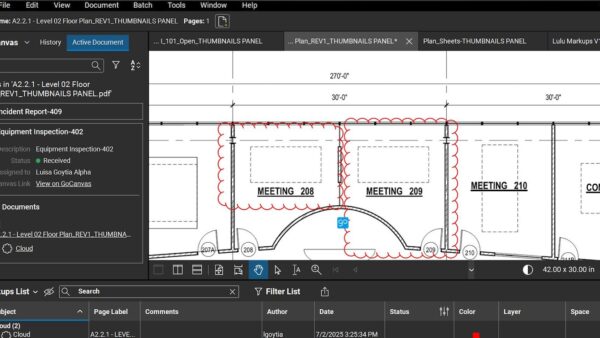
Can you tell construction management and project management software apart? And why does knowing the difference matter? CMiC explains.
Software buyers in construction often fall into the trap of evaluating tools through a single lens – what’s visible on the surface. Menus, dashboards and scheduling features may look similar across platforms, but the foundation behind those interfaces can be entirely different.
The distinction between construction management and project management software is one such example. At first glance, both categories appear to handle projects, tasks, documents and teams. But this overlap in functionality conceals a deeper structural difference in how these systems are built and how they serve construction firms.
Definitions and structural distinctions
Construction management software is designed to support the full scope of a construction company’s activities. This includes field execution, office workflows, financial oversight and subcontractor coordination. It usually integrates directly with an enterprise resource plan, or includes one natively. Construction management software reflects how construction projects are built and billed, from cost-loaded schedules and commitment tracking to change orders and submittal workflows.
Project management software, on the other hand, is centred on coordination. It helps with tasks, deadlines, document management and communication, but typically does not address payment applications, retention, lien waivers or job cost accounting. It’s often built for broader industries and adapted for construction use. While project management tools may serve architects, consultants and owners, they rarely meet the compliance-heavy, cost-sensitive demands of contractors and subcontractors without significant customisation.
This difference in purpose leads to differences in architecture. Construction management software tends to be process-based, aligning workflows with how money, materials and milestones move across a construction project. Project management software tends to be activity-based, optimised for tracking progress and collaboration rather than integrating with the financial backbone of the business.
The implications
The structural difference between construction management and project management platforms affects how construction companies manage risk, ensure compliance, and protect profitability. Construction management software is typically built with integrated contract and cost controls. That means teams can track commitments against budgets, link change orders to updated forecasts, and ensure that subcontractor invoices match approved work. The data generated through these workflows becomes auditable, which simplifies financial reporting and reduces exposure during disputes or audits.
Project management tools often lack this linkage. While they may offer visual dashboards and task dependencies, they don’t enforce contract logic or payment sequencing. This gap forces many organisations to rely on disconnected systems, one for managing field activity, another for tracking financials, and a third for document storage. The result is often duplicated data, manual reconciliation and limited visibility into project health.
For firms managing dozens of concurrent projects, fragmented systems can delay decision-making and increase overhead. Without a unified view of commitments, billings, and costs, teams may miss early warning signs of budget overruns or scope drift. A construction management solution consolidates these indicators into one environment, allowing for faster course correction.
Don’t track, take control
The right software should align with how your company runs its projects. Construction management platforms serve organisations that manage contracts, track actuals against budgets and need a clear audit trail from field data to financials. These systems offer a shared environment where field teams, project managers, and accounting work from the same source of truth.
Project management platforms tend to serve narrower roles. They support communication, but don’t enforce cost controls. They organise tasks, but don’t manage commitments. For firms where coordination is secondary to contract execution, a project management-only solution often falls short.
When software reflects the financial and operational structure of your business, it stops being a tracking tool and becomes a control system. That shift is what separates construction management software from general-purpose project management tools.














